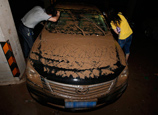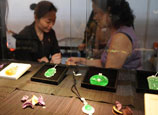
 |
| (Photo/Xinhua) |
Date of Inscription: 2011
Brief Description
The West Lake Cultural Landscape of Hangzhou, comprising the West Lake and the hills surrounding its three sides, has inspired famous poets, scholars and artists since the 9th century. It comprises numerous temples, pagodas, pavilions, gardens and ornamental trees, as well as causeways and artificial islands.
These additions have been made to improve the landscape west of the city of Hangzhou to the south of the Yangtze river.
The West Lake has influenced garden design in the rest of China as well as Japan and Korea over the centuries and bears an exceptional testimony to the cultural tradition of improving landscapes to create a series of vistas reflecting an idealised fusion between humans and nature.
Protection and Management requirements
The nominated property is protected at both national and provincial level by laws and regulations. These include the Law of the People's Republic of China on the Protection of Cultural Relics (national), Regulations on Scenic Areas (national), Regulations on the Conservation and Management of World Cultural Heritage Sites in China (national), and Regulations on the Conservation and Management of West Lake Cultural Landscape of Hangzhou (local). The most relevant national protection is afforded by the national West Lake Scenic area that was promulgated in 1982. The Hangzhou Municipal People's Government Specific Control Plan for the Buffer Zone of West Lake Cultural Landscape, 2010, puts in place constraints on the overall development of the city in relation to its potential impact on the West Lake landscape. It is crucial that these constraints ensure that there is no encroachment of the city behind the hills that are visible from the lake and that all relevant development is subject to Heritage Impact Assessments that consider impact on the attributes of Outstanding Universal Value. Management is the overall responsibility of the Hangzhou Administration of Gardens and Cultural Heritage with advice from the provincial bureau of cultural heritage in Zhejiang and the national State Administration of Cultural Heritage (SACH). The authority operates both as an 'internal institution' and as a 'grassroots unit', with various local organisations and with communities and villages. There is however a need to strengthen the community management system and to coordinate the interests of stakeholders. The Conservation and Management Plan of West Lake Cultural Landscape of Hangzhou (2008-2020) provides a basis for the systematic conservation and management of the property and for implementing protection measures in compliance with national standards for the protection of World Heritage sites. There is also a Master Plan for the West Lake Scenic Area, 2002-2020. In order to contain incremental change that might impact on the harmony of the landscape and its key views, an inventory needs to be established of key visual attributes as a basis for monitoring.
The Municipal authority has drafted nine special plans for scenic areas within West Lake. Other special plans have been prepared such as the Master Plan for Transportation in West Lake Scenic Area of Hangzhou, the Plan for the Integration of the South-Route Scenic Places of West Lake of Hangzhou, the Detailed Plan for the Control over the Westward Expansion of West Lake, the Plan for the Protection of the Beishan Historic and Cultural Street, the Detailed Plan for the Control over the Lingyin Scenic Area, and the Plan for the Construction of the New Socialist Countryside in the Hangzhou West Lake Scenic Area.
The West Lake is both robust and vulnerable: it can absorb comparatively large number of visitors but beyond a certain point, the needs of the visitors and their impact on the landscape could impact adversely on the authenticity of the property, on the quality of their visits, and on the ability of the landscape to inspire. Visitor management needs to be given a high priority in relation to the overall management of the property.(Source: whc.unesco.org)
















 Rainstorms flood more than 10,000 cars in underground garages in Wuhan
Rainstorms flood more than 10,000 cars in underground garages in Wuhan


![]()
